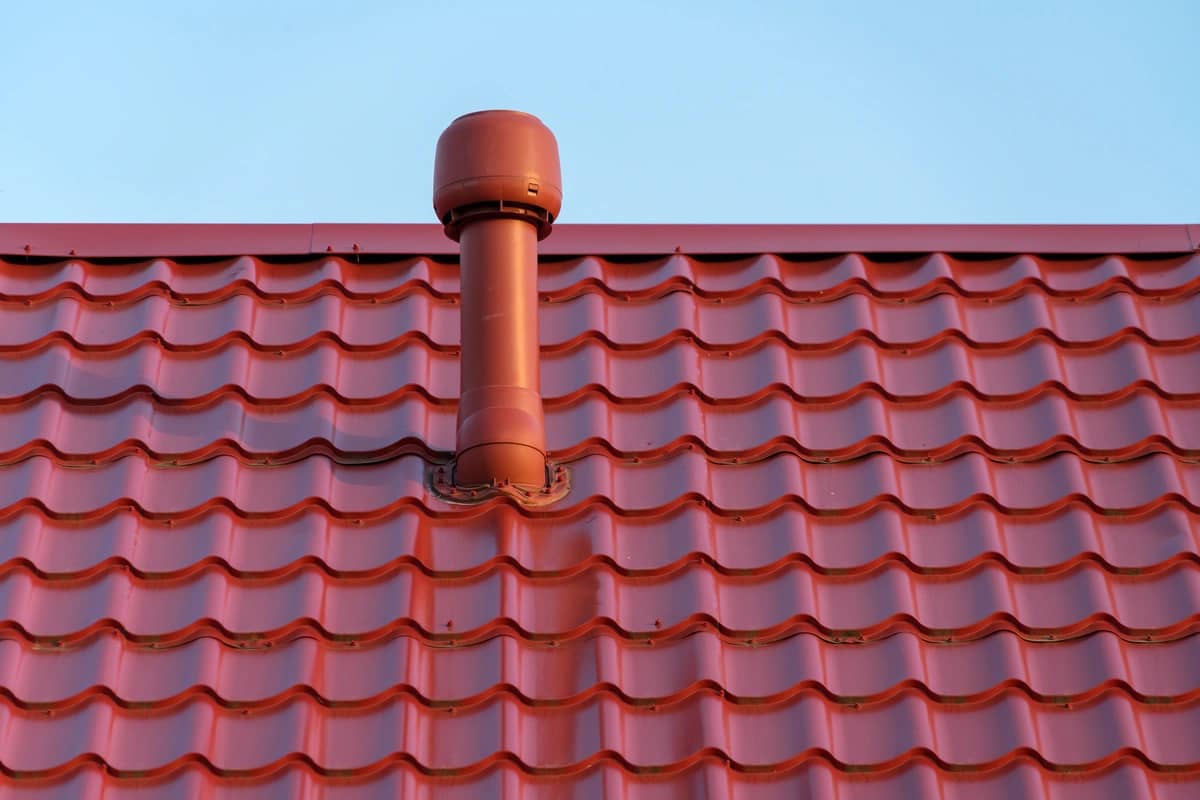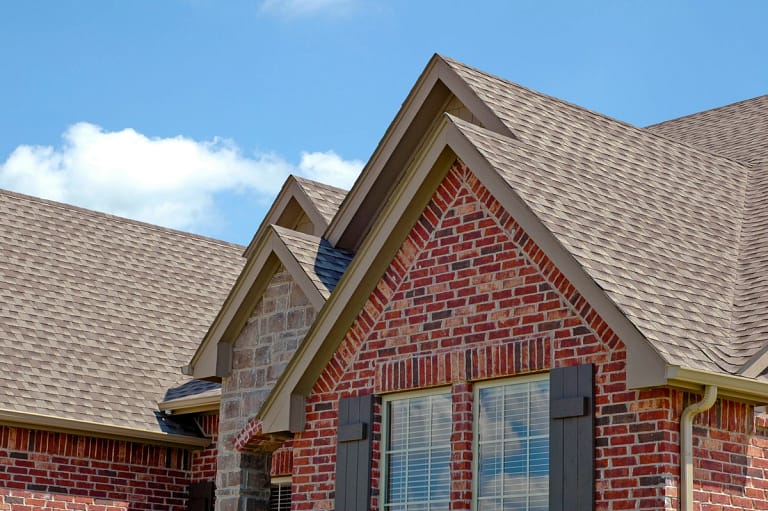As homeowners, we often focus on the aesthetics and durability of our roofs, but one crucial aspect that tends to be overlooked is roof ventilation.
It makes sense. After all, most of us are not roofing experts and may not even know that our roofing system needs ventilation. The truth is, that proper roof ventilation is essential for maintaining a healthy and functional home.
Luckily, you have lots of options!
In this blog post, we will help you to understand:
- The significance of roof ventilation
- Various types of ventilation systems are available
- Telltale signs that your home may be suffering from inadequate ventilation
With our hope, you’ll be on your way to a healthier roof in no time at all!
Understanding Roof Ventilation
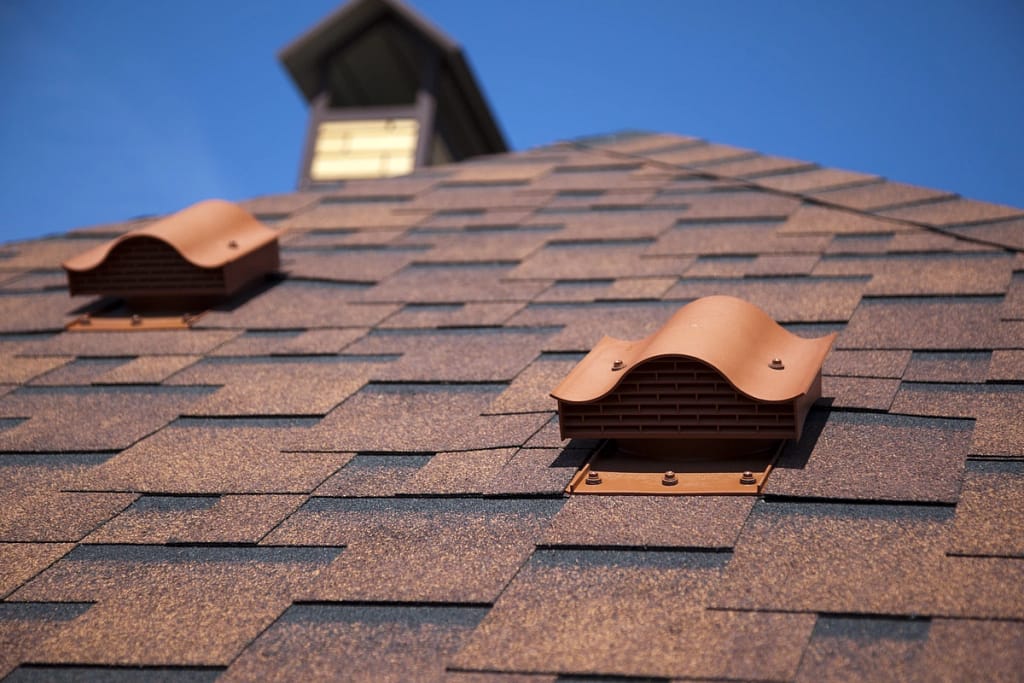
So, what the heck is roof ventilation anyway? Isn’t your roof designed to keep things out, not let air in?
Well…sort of.
Roof ventilation is the process of creating a balanced flow of air between the inside and outside of your home through the roof. It involves the intake of fresh air and the expulsion of warm, moist air and pollutants. The primary goal of roof ventilation is to regulate temperature and humidity levels within the attic space, preventing damage and enhancing the overall comfort and energy efficiency of your home.
The Importance of Roof Ventilation
Your roof vent isn’t just there to look pretty. It serves an essential function! Roof ventilation is hugely important to the overall health of your roof and home. Here are just a few of the things that roof ventilation can do for you.
- 🌊 Preventing Moisture Buildup – Without proper ventilation, moisture can accumulate in your attic due to activities such as cooking, bathing, and even breathing. This moisture can lead to the growth of mold and mildew, which not only pose health risks to occupants but can also weaken the structural integrity of your roof.
- ⏳ Extending Roof Lifespan – Excessive heat trapped in the attic during hot weather can cause shingles to deteriorate prematurely, shortening the lifespan of your roof. Adequate ventilation allows hot air to escape, reducing the risk of thermal damage and extending the longevity of your roofing materials.
- ⚡ Enhancing Energy Efficiency – During colder months, a well-ventilated attic helps prevent the buildup of ice dams on the roof, reducing the need for excessive heating and minimizing energy consumption. In warmer months, proper ventilation can reduce the strain on air conditioning systems, leading to energy savings.
- 👍 Maintaining Indoor Comfort – By regulating the temperature and humidity in your attic, roof ventilation creates a more comfortable living environment throughout your home. This balanced airflow helps prevent temperature extremes and ensures that your HVAC systems function optimally.
5 Different Types of Roof Ventilation Systems
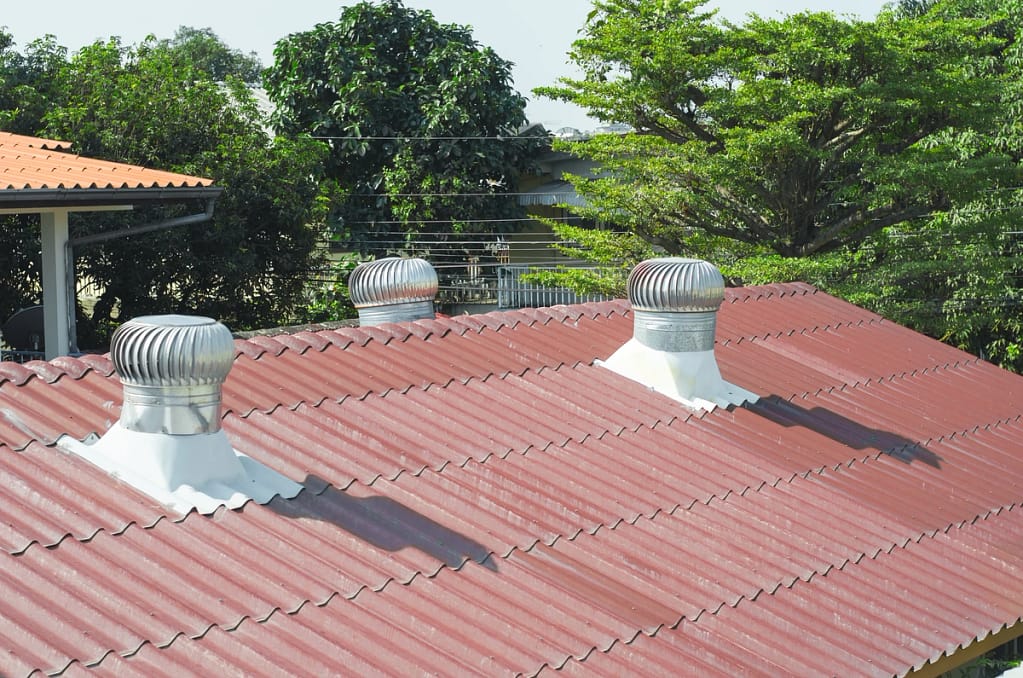
Not all roof ventilation systems are created equal. Your home has unique needs and challenges and often requires personalized solutions in order to make sure that it stays safe.
Wondering what your options are when it comes to roof vents? Here are 5 of the most popular types of roof ventilation systems.
1) Ridge Vents
Ridge vents are installed at the peak of the roof, allowing warm air to escape from the attic. They work in tandem with soffit vents, drawing in cooler air from the outside to replace the expelled warm air. Ridge vents provide a continuous, low-profile ventilation solution that blends seamlessly with the roofline.
2) Soffit Vents
Soffit vents are located under the eaves of the roof and facilitate the intake of fresh air from outside. They work alongside ridge vents to create a balanced airflow, ensuring efficient ventilation. Soffit vents come in various styles, including perforated panels and continuous strips, catering to different architectural designs.
3) Gable Vents
Gable vents are installed on the sides of gable walls and promote air circulation within the attic space. They are particularly effective when used in combination with other ventilation systems, such as ridge vents and soffit vents.
4) Turbine Vents
Turbine vents are powered by wind and use the natural force of the breeze to create ventilation. As wind blows, the turbine spins, drawing hot air out of the attic. While effective, they may produce some noise in high-wind conditions.
5) Powered Attic Fans
Powered attic fans are electrically operated and actively expel hot air from the attic. They are especially useful in regions with minimal natural wind or for homes with inadequate passive ventilation.
Signs of Poor Roof Ventilation
Poor ventilation isn’t difficult to spot if you know what you are looking for. In fact, you probably ended up here because you are currently experiencing some of these issues in your own home.
If you are wondering if you have ventilation problems, look for the following signs:
- Excessive Heat in the Attic – If your attic feels excessively hot during warm weather, it may be a sign of poor ventilation. This can accelerate the breakdown of roofing materials and reduce their lifespan.
- Mold and Mildew Growth – The presence of mold or mildew on the attic’s surfaces indicates high humidity levels due to inadequate ventilation. Addressing this promptly is crucial for maintaining good indoor air quality.
- Ice Dams in Winter – The formation of ice dams on the roof during colder months suggests that warm air is trapped in the attic, causing snow on the roof to melt and refreeze at the eaves. Proper ventilation can prevent this issue.
- High Energy Bills – If your heating and cooling costs are consistently higher than expected, it could be a result of inadequate roof ventilation. Proper airflow helps regulate indoor temperature and reduces the strain on HVAC systems.
Finding a Qualified Roofing Contractor for Roof Vent Installation
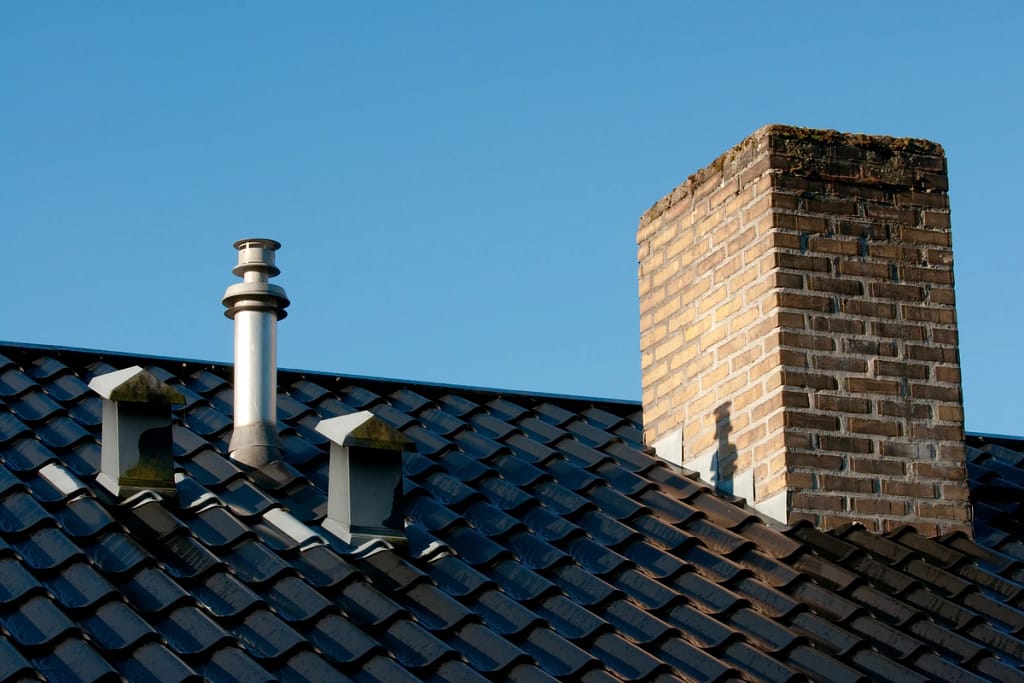
When it comes to installing roof vents, the expertise and skill of the roofing contractor play a significant role in ensuring the effectiveness and longevity of your ventilation system. To find a qualified roofing contractor for your roof vent installation, consider the following steps:
- Research Local Roofing Contractors: Start by conducting thorough research on local roofing contractors in your area. Look for well-established companies with a proven track record of successful roof installations and positive customer reviews. Online platforms, such as Google reviews, Angie’s List, or the Better Business Bureau, can provide valuable insights into a contractor’s reputation and reliability.
- Check Licenses and Certifications: Verify that the roofing contractor you are considering is licensed to operate in your state or region. Proper licensing ensures that the contractor meets the necessary industry standards and adheres to local building codes. Additionally, check for any certifications from roofing material manufacturers, as these certifications can indicate a contractor’s expertise and familiarity with specific products.
- Ask for References and Portfolios: Ask the contractor to provide references from past clients who had roof vents installed. Speaking directly to previous customers can give you an idea of the contractor’s workmanship, communication skills, and overall satisfaction level. Additionally, request to see their portfolio or examples of their previous roof vent installations to assess the quality of their work.
- Seek Multiple Quotes: Obtain quotes from multiple roofing contractors for the roof vent installation project. This will allow you to compare prices, services offered, and the scope of work. Beware of significantly low bids, as they might indicate subpar materials or lack of experience. Conversely, excessively high quotes may not necessarily translate to better quality.
- Inquire About Experience and Expertise: Ask the roofing contractor about their experience with roof vent installations specifically. A contractor with ample experience in this area is more likely to identify the most suitable ventilation system for your home’s design and climate conditions. Inquire about the training and expertise of their team members to ensure they have the necessary skills to execute the job effectively.
- Verify Insurance Coverage: Ensure that the roofing contractor carries liability insurance and worker’s compensation coverage. This protects you from potential liability in case of accidents or damages that may occur during the installation process. Request to see proof of insurance before proceeding with the project.
- Check for Warranties and Guarantees: Reputable roofing contractors often provide warranties or guarantees on their workmanship and the materials used. Make sure to understand the details of these warranties, including their duration and coverage, before finalizing your decision.
- Communication and Professionalism: Pay attention to the contractor’s communication and professionalism during the initial consultations. A reliable contractor will be responsive to your inquiries, provide clear explanations, and address any concerns you may have.
Work With the Best!
If you’re looking for a trustworthy roofing company to help with your ventilation needs, look no further than Best Exteriors! Our team is the go-to choice for Ohio residents looking to improve their home’s exterior. Contact our team today to set up your free consultation!
